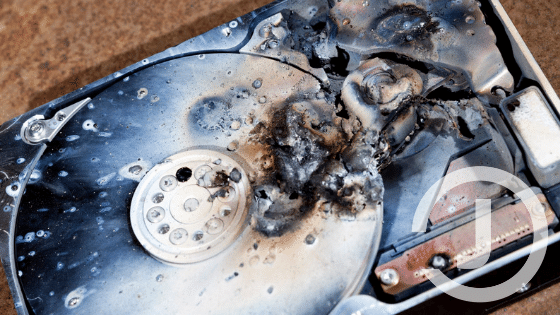Have you noticed your computer is a little sluggish lately? Maybe it takes longer to boot it up than it takes you to grab a cup of coffee. Or, maybe you’ve noticed the fan on your CPU is working so hard you think it might take flight. Both are signs that it’s time to give your hard drive a little TLC. Here’s what Jurrens & Associates recommends to keep your hard drive in good working order.
1. Schedule Time to Uninstall Unneeded Software
Just like good health, good hard drive maintenance starts from the inside out. When’s the last time you took an inventory of all the software programs installed on your hard drive?
We don’t recommend ever uninstalling software on your own. But if it’s been more than a year since you’ve reviewed the software on your system, Jurrens & Associates suggests blocking a half-hour out of your schedule to scroll through your Start menu and make a list of any unused or unneeded software. If you’re not sure if you need a program or not, give us a call. If you don’t know what a program does, DON’T delete it!
If you are CERTAIN that the programs on your list are not needed, then it’s time to uninstall your unneeded programs. If you are NOT absolutely certain, give Jurrens a call. There’s no such thing as a stupid question!
2. Defragment Your Hard Drive
Defragging your hard drive is the computer equivalent of changing the oil in your car. Without regular defragging, your hard drive has to work harder to do its job. This can eventually wear out the hard drive and lead to failure. Defragging keeps your hard drive running smoothly and quickly.
If you’re a Windows 8 or Windows 10 user, your computer automatically defrags your hard drive weekly. But if you feel files are taking longer to load or your computer feels sluggish, you can defrag it manually, too. Click on your Start menu, then start typing “defrag.” The Defragment and Optimize Drives tool should pop up. From there, you can discover when the last defrag ran. To defrag manually, click Optimize.
3. Use a Surge Protector
Now that you’ve taken care of your hard drive’s insides, it’s time to maintain the physical drive itself. The single most important investment you can make to protect your hard drive is a good surge protector. Power surges can wipe hard drives in seconds. Plugging your computer into a surge protector rather than straight into an outlet can save your drive and your data. Not all surge protectors will actually prevent damage from a surge, so contact us for our recommended brand.
4. Invest in a Can of Air
When’s the last time you moved your CPU or looked behind your tower? We guess it was when you first set up your computer. Dust can block the ventilation system that keeps your hard drive cool. If your computer’s fans can’t keep the hard drive cool, the drive has to work harder and hotter. Eventually, this will kill your hard drive.
A can of compressed air can help you keep your computer’s ventilation system clear of dust and debris. You can pick one up for a couple of bucks from your local computer or big box store. Put a reminder on your calendar to spray your CPU every month or so. Avoid the urge to open up the guts of your tower and clean individual components, though. Unless you’ve built your own computer, internal cleaning is best left to the experts.
5. Upgrade to a Solid State Drive (SSD)
Often, good maintenance means upgrading your computer’s components. Solid state hard drives do not have any moving parts. So, they have fewer parts and mechanisms that can fail. They are also faster than traditional hard drives. When you upgrade to an SSD, you’ll notice your computer boots up faster and loads programs and files rapidly. This can add up to considerable time savings.
If you’ve noticed your computer has been a bit sluggish lately or if you’re pulling your hair out over long boot-up or load times, give Jurrens & Associates a call. We can help take inventory of all your hard drives and develop a plan to maintain them or upgrade them to SSD. Contact us today to get started.
